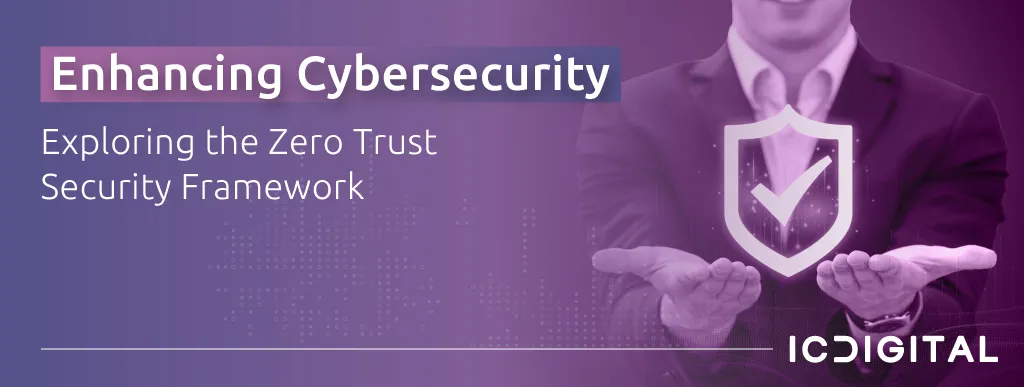
Enhancing Cybersecurity: Exploring the Zero Trust Security Framework

The Zero Trust security model is a modern approach to cybersecurity that assumes that no user or device can be trusted by default. This approach is based on the principle of least privilege, which grants users and devices only the access they need to perform their tasks.
Zero Trust security is becoming increasingly important as organizations face a growing number of cyber threats, both from outside and inside the network. Traditional perimeter security models are no longer effective in protecting against these threats.
Principles of Zero Trust security
The Zero Trust security model is based on the following principles:
- Assume that no user or device can be trusted by default. This means that all users and devices, regardless of whether they are inside or outside the network, must be verified before they are granted access to resources.
- Verify everything. This means that all users, devices, and traffic must be verified before they are granted access to resources. This can be done using a variety of methods, such as multi-factor authentication, micro-segmentation, and continuous monitoring.
- Grant the least privilege. This means that users and devices should only be granted the access they need to perform their tasks. This helps to reduce the risk of a data breach if an account is compromised.
Benefits of Zero Trust security
Zero Trust security offers a number of benefits, including:
- Improved security posture. Zero Trust security can help organizations to improve their security posture by reducing the risk of data breaches and other cyber attacks.
- Increased visibility. Zero Trust security provides organizations with greater visibility into their networks and systems. This can help organizations to identify and respond to threats more quickly.
- Reduced costs. Zero Trust security can help organizations to reduce their IT costs by eliminating the need for expensive perimeter security solutions.
- Improved compliance. Zero Trust security can help organizations to comply with a variety of industry regulations, such as the General Data Protection Regulation (GDPR).
How to implement a zero-trust approach
There are a number of steps that organizations can take to implement a zero-trust approach to security:
- Assess your current security posture. This will help you to identify areas where your security needs to be improved.
- Develop a zero-trust security strategy. This strategy should outline your goals for Zero Trust security and the steps that you will take to achieve them.
- Implement the necessary security controls. This may include implementing multi-factor authentication, micro-segmentation, and continuous monitoring.
- Educate your employees about Zero Trust security. It is important for your employees to understand the principles of Zero Trust security and their role in implementing it.
Conclusion
Zero Trust security is a modern approach to cybersecurity that can help organizations to improve their security posture, increase visibility into their networks and systems, reduce costs, and improve compliance.
Example of a Zero Trust implementation
Here is an example of how a Zero Trust security model can be implemented in a real-world setting:
An organization has a network of employees who need to access a variety of resources, such as customer data, financial data, and intellectual property. The organization also has a number of third-party vendors that need to access the network to provide services.
The organization implements a zero-trust security model by:
- Requiring all users and devices to authenticate before they are granted access to the network.
- Using micro-segmentation to isolate different parts of the network, such as the customer database and the financial database.
- Continuously monitoring network traffic and user activity for suspicious behavior.
- Implementing a least privilege model, which grants users and devices only the access they need to perform their tasks.
As a result of these measures, the organization is able to reduce the risk of data breaches and other cyber attacks. The organization is also able to comply with a variety of industry regulations, such as the GDPR.
Additional tips for implementing a Zero Trust approach
Here are some additional tips for implementing a Zero Trust security approach:
- Start small. It is not necessary to implement Zero Trust security across your entire organization overnight. Start by implementing it in a pilot project and then roll it out to the rest of the organization over time.
- Get buy-in from leadership. It is important to get buy-in from leadership before implementing a zero-trust security approach. This will help to ensure that you have the resources and support you need to be successful.
- Use the right tools and technologies. There are a number of tools and technologies that can help
